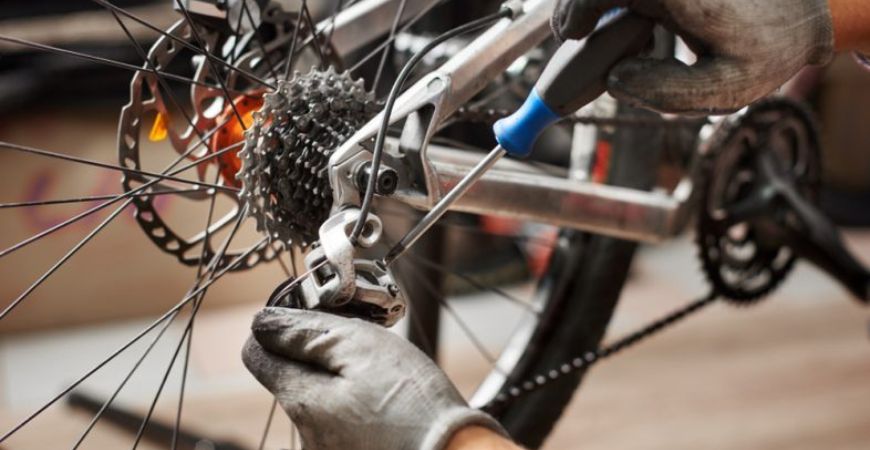Bike care - MAIN STEPS
BIKE CARE - MAIN STEPS
If you like to ride downhill, love to take care of your bike. That's how you can paraphrase the well-known saying "if you like going downhill, love to ride sleds" and apply it to the bicycle. After all, owning a two-wheeled vehicle is associated not only with the pleasure of riding it, but also with caring for a pet. Buying a bicycle is in one way or another related to constantly monitoring the condition of your pet. In this article we will cover all the nuances of basic maintenance and care that you can apply to a bicycle for children, road, mountain, and city.

- Washing: A clean frame and components will protect your bike from corrosion and misuse;
- Lubrication - All rotating and rubbing elements must be lubricated;
- Tuning: Constant monitoring and adjustment of the main nodes are able to prolong the life of the LED;
- Repair: timely replacement of worn parts will save other components from premature failure;
- Storage: Where and how the bicycle is stored also affects its technical condition.
Let's take a look at each stage of bicycle care separately.
- Not only is a clean bike fun to ride, but dirt can interfere with the gear system and cause corrosion on frame tubes and other components. To wash your bike, use special detergents without reagents, which can wash away lubricant and damage rubber seals in wheel hubs and other bearings. A soft brush and a gentle stream of water will be enough to wash your bike. Try to avoid high-pressure washing, as it can end up with an unexpected trip to the workshop ;).
- Placement. Key components such as transmission and brakes are controlled by braided steel cables that stretch over time and must be adjusted accordingly. The second important aspect is the air pressure in the tires. Check it at least once a week because air escapes through micropores in the rubber structure (especially important for extreme temperatures and long downtime). If adjustment and inspection are done before each trip, this will help eliminate breakdowns and premature wear of parts.
- Placement. Key components such as transmission and brakes are controlled by braided steel cables that stretch over time and must be adjusted accordingly. The second important aspect is the air pressure in the tires. Check it at least once a week because air escapes through micropores in the rubber structure (especially important for extreme temperatures and long downtime). If adjustment and inspection are performed before each trip, this will help eliminate breakdowns and premature wear of parts
- Repair. As much as you hate to talk about it, some parts of your bike are subject to wear and tear during operation. Specifically, these are a chain and sprockets, as well as tires and brake pads. If you change them in time, you can avoid the case where something breaks or stops working before the most interesting ride. Check chain condition for tension (should be changed every 700-1000 km), as well as cassette stars (replacement every 2-3 chain changes), so your drivetrain will last many times longer. Check your brake pads every 500 km, but if you have been riding in extreme conditions be sure to check them more often.
- Conservation. An important process in caring for a bicycle is its storage (meaning long-term). Under what conditions of humidity and temperature indicators you will store your bike in the future will affect its technical condition. Be sure to wash and lubricate your bicycle before putting it into long-term storage, even if you have ridden it very little. Reduce the tire pressure to 1-1.5 atmospheres, and if the bike is stationary for a couple of months, be sure to check this indicator. Special racks and mounts are used for storing the bike that will not damage the paint and are able to place your bike in a convenient place.
These recommendations are generalized, of course, each type of bike has its own approach, for example, caring for a mountain bike requires constant monitoring of the condition of the suspension: front fork, shock absorber, etc. In other words, the more complex the mechanism, the more attention it requires from the owner. Caring for the bike in winter also requires a special approach; don't neglect these elementary tricks and your bike will always be in service!


